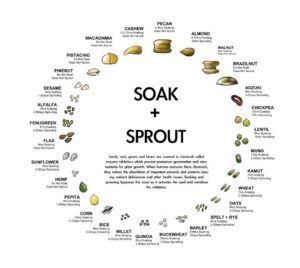Beating seasonal affective disorder naturally is possible. As I write this, the weather is cold and gloomy and a steady rain is falling. Don’t even get me started on the fact that it gets dark at 4:30 p.m. now. I just want to curl up and nap on the couch with my blanket and my puppy dog. Do you find yourself struggling as the days are shorter and you are exposed to less and less sunlight?
It is not unusual to experience some changes in energy levels as we move into fall and winter. However if you find that your symptoms are pronounced and you are having trouble functioning, you might be suffering from seasonal mood imbalances or Seasonal Affective Disorder (SAD). Symptoms for SAD vary greatly and can include:
- Feeling sad or depressed
- Oversleeping
- Appetite changes, especially a craving for foods high in carbohydrates
- Weight gain
- Tiredness or low energy
One cause for mood imbalances is a decrease in serotonin, a neurotransmitter or brain chemical, that is responsible for the overall sensation of well-being, as well as regulation of the sleep-wake cycle.
Yet another cause can be a Vitamin D deficiency. Vitamin D is not really a vitamin at all but a group of steroid-like substances that we can make from cholesterol if we have adequate exposure to sunlight. In the wintertime, we often don’t get enough exposure to UVBs from sunlight in such a way that we have the opportunity to make enough Vitamin D. A lack of Vitamin D3 can therefore lead to depressive symptoms, as well as compromise our ability to absorb critical minerals like zinc, magnesium, calcium, iron, and phosphate.
Let me share safe methods to help you conquer the blahs and blues.
Sun lamps or light therapy. One natural method for achieving balance is by using light therapy that contains full-spectrum 10,000 lux intensity. 10,000 lux is the recommended light intensity to reset your circadian rhythm and improve your well-being. Research has shown that infrared light is effective in increasing the production of serotonin, that feel-good brain chemical we discussed earlier. I own a Verilux HappyLight and use it 30 minutes per day first thing in the morning in the fall and winter. You may not want to use it later in the day or evening as it may disrupt sleep.
Vitamin D3 Have your Vitamin D levels tested so you know the appropriate level of supplementation. We offer several options from vegan, to easy to take liquid or capsules of Vitamin D3. In addition, please keep in mind that if you eat fish and eggs, you can get some of the vitamin D that you need from clean, wild-caught (not farm-raised) fatty fishes like salmon, or mackerel, and the yolks of eggs from pastured chickens that haven’t consumed genetically modified feed. However, with severe Vitamin D deficiencies, food may not be enough to bring your levels up to balance your body.
Fun, Sweaty Activity Some call it to exercise but I like to keep it fun! Do something physical daily that makes you happy like tennis, walking, golf, riding bikes, or restorative yoga. Even 15 minutes of walking per day can have a positive impact on your emotional health along with the many physical benefits.
Essential Oils There are so many oils that I use to help calm or lift my mood. Here are some of my favorites and I encourage you to use multiple oils together for a powerful synergy.
-
- Uplifting mood – Orange, Grapefruit, Lemon, Frankincense
- Destress – Lavender, Bergamont, Lemongrass, Frankincense
- Motivation and energy – Peppermint, Rosemary, Basil, Melissa
Eat Whole Clean Foods – When I switched to a predominantly organic diet, my health status improved dramatically. Moving away from toxic, packaged processed foods wasn’t serving my body or my mind. It is worth the extra money to invest in your health upfront by choosing organically grown food. Grabbing an organic apple, pear, or carrot will not only feed your body and mind but detox it at the same time. You’ll digest better which creates a healthier gut. You’ve probably heard the gut-brain correlation, well it’s true. Regulating gut flora with whole, clean foods is a positive step toward building a solid foundation for health and preventing SAD and many other diseases.
Are you impacted by seasonal mood imbalances? If so, what have you found that helps? We’d love to help you save money on high-quality healthcare professional-grade supplements. Check out our wellness store to shop 16,000 products with over 350 brands.





